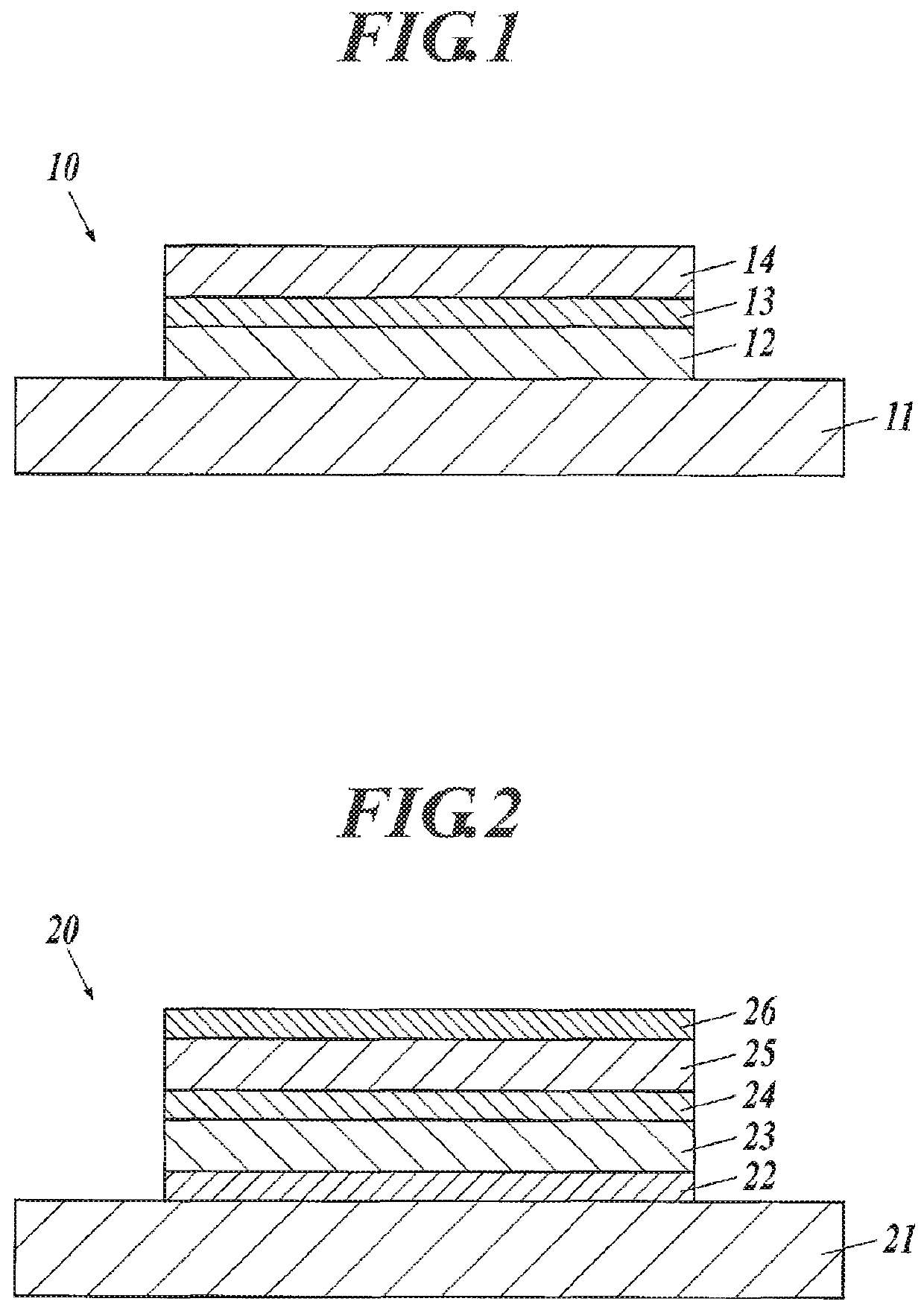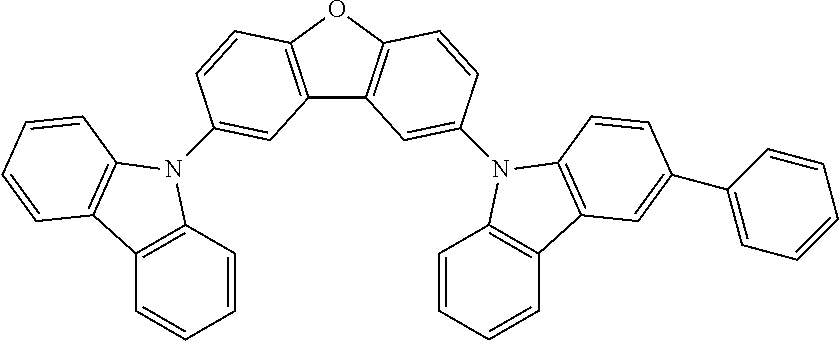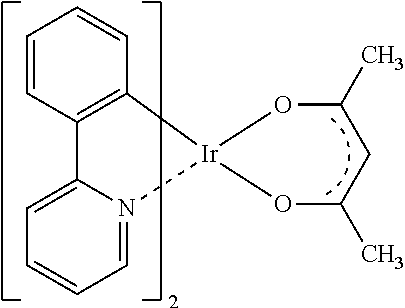Organic thin-film laminate and organic electroluminescence element
a technology of organic electroluminescent elements and thin films, applied in the field of organic thin films and organic electroluminescent elements, can solve the problems of large scale of curing treatment devices and damage, and achieve the effects of reducing performance deterioration, smallest atomic radius, and largest electro negativity valu
- Summary
- Abstract
- Description
- Claims
- Application Information
AI Technical Summary
Benefits of technology
Problems solved by technology
Method used
Image
Examples
example 1
101>>
[0180]A first light emitting layer, an intermediate layer and a second light emitting layer were formed on a substrate, then it was sealed as described in the following. Thus, it was obtained an organic thin-film laminate 101 having a light emitting area of 5 cm×5 cm.
(Preparation of Substrate)
[0181]An inorganic gas barrier film made of SiOx with a layer thickness of 500 nm was formed on the total surface of polyethylene naphthalate (made by Teijin-DuPont Co. Ltd., hereafter, it is abbreviated as PEN) to which a first light emitting layer was formed by using an atmospheric pressure plasma discharge processor having a structure described in JP-A No. 2004-68143. By this it was formed a flexible substrate having a gas barrier property of an oxygen permeability of 0.001 mL / m2 / day or less, and a water vapor permeability 1 of 0.001 g / m2 / day or less.
(Formation of First Electrode Layer)
[0182]ITO (indium tin oxide) was sputtered on the above-described substrate to form a film having a th...
example 2
201>>
[0228]A bottom emission type organic EL element having the following constitution was formed. On an substrate were formed with: an anode / a first light emitting unit (a hole injection layer / a hole transport layer / a first light emitting layer) / intermediate layers (a first intermediate layer / a second intermediate layer / a third intermediate layer) / a second light emitting unit (a hole transport layer / a second light emitting layer / an electron transport layer / an electron injection layer) / a cathode. This was sealed to obtain an organic thin-film laminate 201.
(Preparation of Substrate)
[0229]An inorganic gas barrier film made of SiOx with a layer thickness of 500 nm was formed on the total surface of polyethylene naphthalate (made by Teijin-DuPont Co. Ltd., hereafter, it is abbreviated as PEN) to which an anode was formed by using an atmospheric pressure plasma discharge processor having a structure described in JP-A No. 2004-68143.
[0230]By this it was formed a flexible substrate having ...
example 3
[0299]An organic EL element 301 that emits white light was produced in the same manner as production of the organic EL element 201 in Example 2 except that the forming methods of the second light emitting layer, the electron transport layer, and the electron injection layer in the second light emitting unit were changed as described in the following.
(Formation of Second Light Emitting Unit—Second Light Emitting Layer)
[0300]On the third intermediate layer was formed a hole transport layer for the second light emitting unit having the same constitution as the first light emitting unit in the same manner as formation of the organic EL element 201. Thereon was formed a second light emitting layer material having the following composition with a die coat method at a rate of 5 m / min. After natural drying, the coated substance was kept at 120° C. for 30 minutes. Thus it was formed a second light emitting layer having a thickness of 40 nm.
[0301]
Host compound S-26:9.5mass partsPhosphorescent...
PUM
| Property | Measurement | Unit |
|---|---|---|
| solubility | aaaaa | aaaaa |
| dielectric constant | aaaaa | aaaaa |
| thickness | aaaaa | aaaaa |
Abstract
Description
Claims
Application Information
 Login to View More
Login to View More - R&D
- Intellectual Property
- Life Sciences
- Materials
- Tech Scout
- Unparalleled Data Quality
- Higher Quality Content
- 60% Fewer Hallucinations
Browse by: Latest US Patents, China's latest patents, Technical Efficacy Thesaurus, Application Domain, Technology Topic, Popular Technical Reports.
© 2025 PatSnap. All rights reserved.Legal|Privacy policy|Modern Slavery Act Transparency Statement|Sitemap|About US| Contact US: help@patsnap.com



